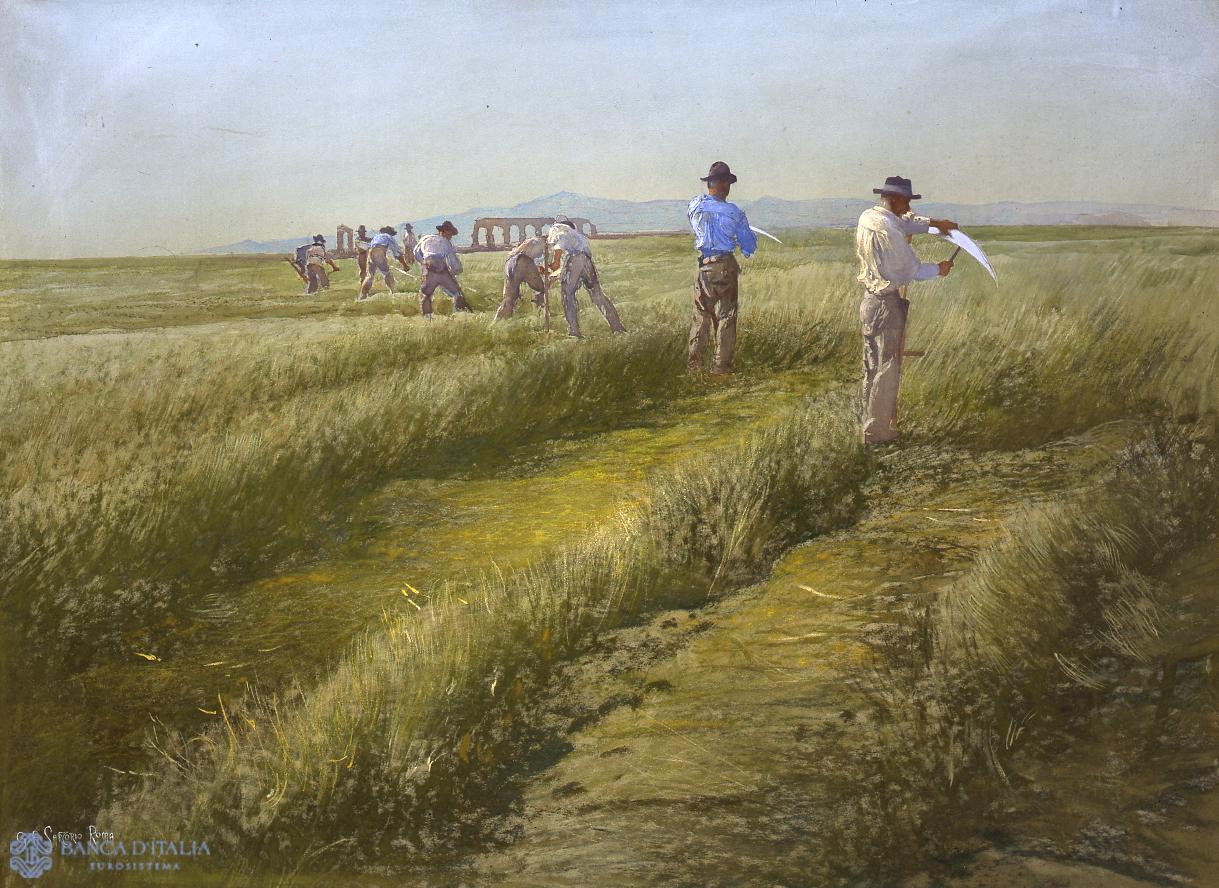A high horizon illuminated by a diffuse, southern light affords a glimpse of the contours of the hills in the background. The entire foreground is occupied by the scene of mowing in which a group of peasants are engaged. Two standing men are sharpening their scythe. Opening behind them are two corridors freed of the grass that extends like a green sea to the very edge of the horizon. Other figures in groups of two or at most three persons are set obliquely, crossing the whole composition and amplifying the effect of vastness and distance.
The simplification of the scene in the progressions and in the basic layers of colour is intended to highlight the features of the landscape depicted. The ruins of an aqueduct that stand out at the limit of the horizon tell us that this is the Roman campagna. Yet the study of the effects of sunlight is a novelty that distinguishes Sartorio from his colleagues in that group, intensifying the capacity to capture natural phenomena with the utmost fidelity and truth. The theme of the work is, in effect, common to all the artists of the Roman campagna group. Returning from Weimar in the early years of the century, after the experience of In Arte Libertas Sartorio took up landscape again and, with Coleman, Raggio and Carlandi, founded the Gruppo dei XXV della Campagna Romana.
Giulio Aristide Sartorio, La falciatura
La falciatura
Painting
20th century AD
Landscape

Artist
Date
1900 ca.
Material and technique
Oil on canvas
Measurements
55 x 76 cm
Compiler
Augusta Monferini
